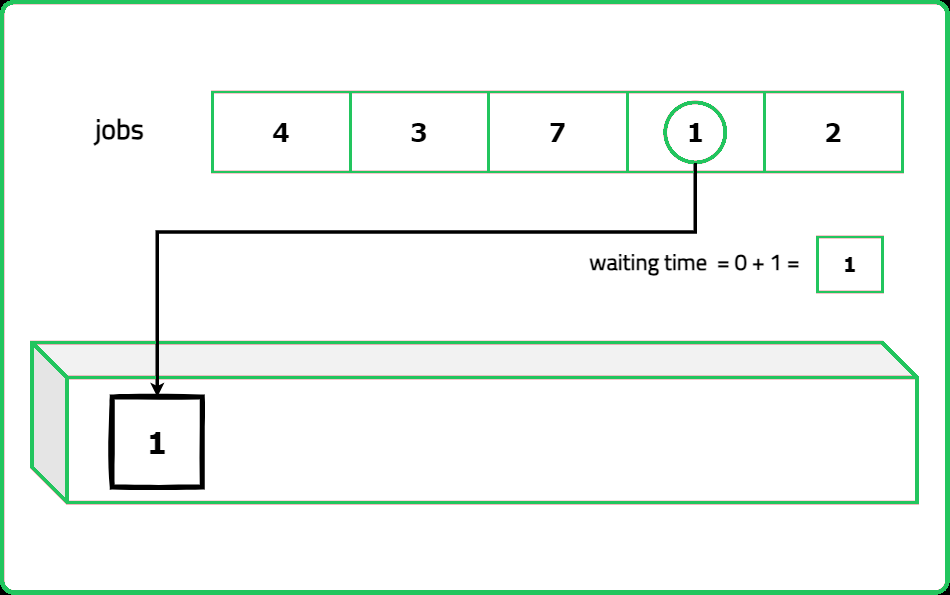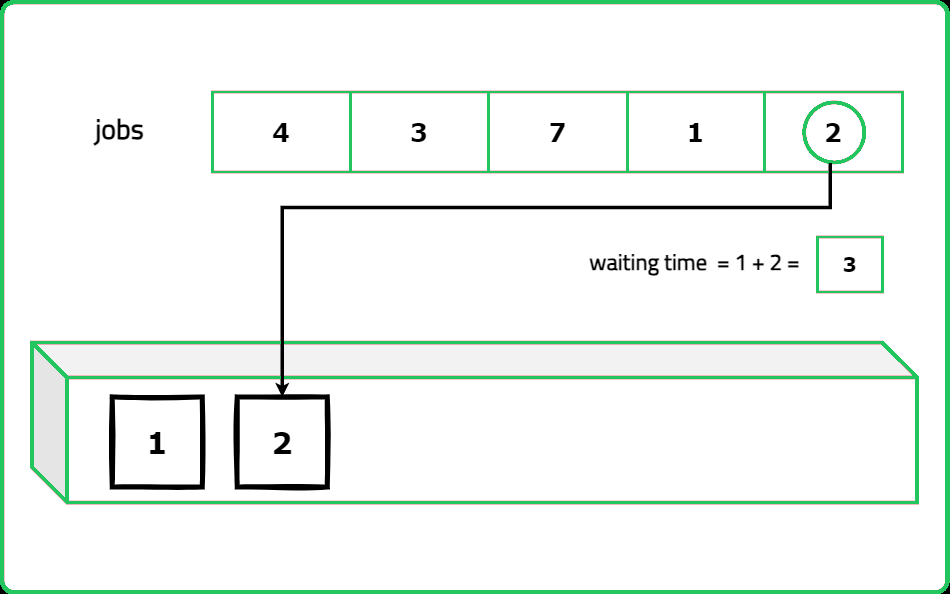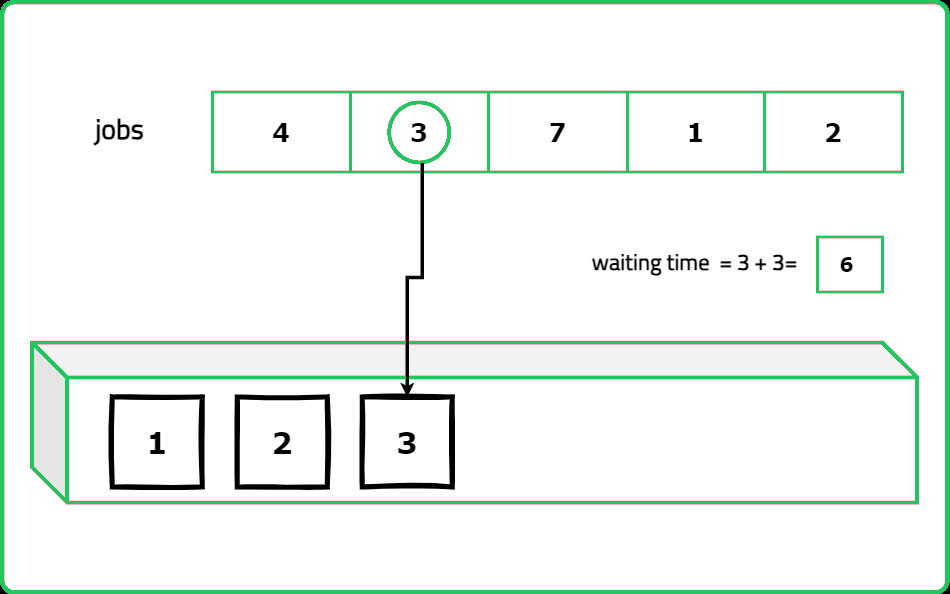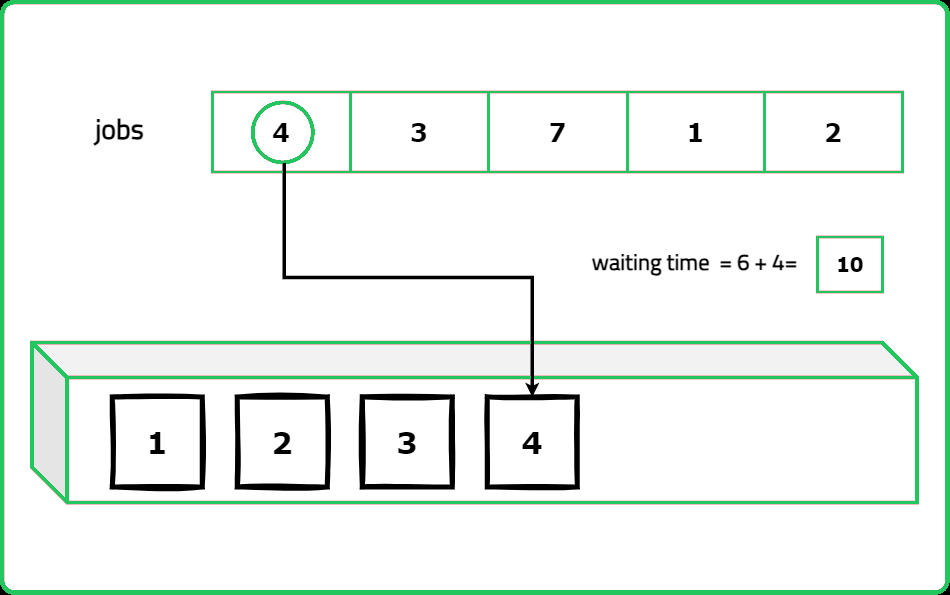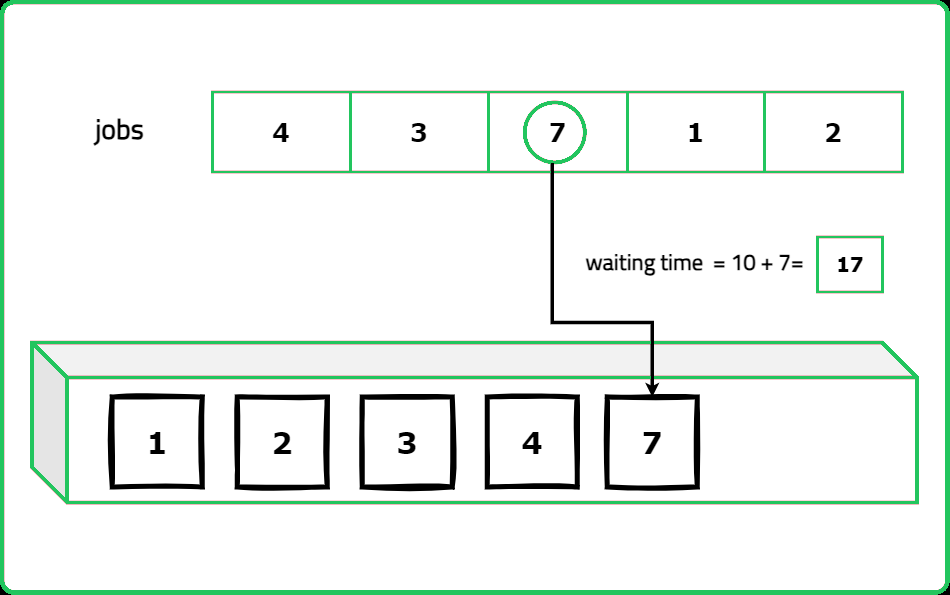1234567891011121314151617181920212223242526272829303132333435363738394041424344
#include <bits/stdc++.h>
using namespace std;
class Solution {
public:
/*Function to calculate total waiting
time using Shortest Job First algorithm*/
long long solve(vector<int>& bt) {
// Sort jobs in ascending order
sort(bt.begin(), bt.end());
// Initialize total waiting time
long long waitTime = 0;
// Initialize total time taken
long long totalTime = 0;
// Get number of jobs
int n = bt.size();
// Iterate to calculate waiting time
for (int i = 0; i < n; ++i) {
waitTime += totalTime;
totalTime += bt[i];
}
// Return average waiting time
return waitTime/n;
}
};
int main() {
vector<int> jobs = {1, 2, 3, 4};
cout << "Array Representing Job Durations: ";
for (int i = 0; i < jobs.size(); i++) {
cout << jobs[i] << " ";
}
cout << endl;
Solution solution;
long long ans = solution.solve(jobs);
cout << "Total waiting time: " << ans << endl;
return 0;
}
1234567891011121314151617181920212223242526272829303132333435363738394041
import java.util.*;
class Solution {
/* Function to calculate total waiting
time using Shortest Job First algorithm */
public long solve(int[] bt) {
// Sort jobs in ascending order
Arrays.sort(bt);
// Initialize total waiting time
long waitTime = 0;
// Initialize total time taken
long totalTime = 0;
// Get number of jobs
int n = bt.length;
// Iterate to calculate waiting time
for (int i = 0; i < n; ++i) {
waitTime += totalTime;
totalTime += bt[i];
}
// Return average waiting time
return waitTime / n;
}
public static void main(String[] args) {
int[] jobs = {1, 2, 3, 4};
System.out.print("Array Representing Job Durations: ");
for (int job : jobs) {
System.out.print(job + " ");
}
System.out.println();
Solution solution = new Solution();
long ans = solution.solve(jobs);
System.out.println("Total waiting time: " + ans);
}
}
1234567891011121314151617181920212223242526272829303132333435
class Solution:
"""Function to calculate total waiting
time using Shortest Job First algorithm"""
def solve(self, bt):
# Sort jobs in ascending order
bt.sort()
# Initialize total waiting time
wait_time = 0
# Initialize total time taken
total_time = 0
# Get number of jobs
n = len(bt)
# Iterate to calculate waiting time
for i in range(n):
wait_time += total_time
total_time += bt[i]
# Return average waiting time
return wait_time // n
# Example usage
if __name__ == "__main__":
jobs = [1, 2, 3, 4]
print("Array Representing Job Durations: ", end="")
for job in jobs:
print(job, end=" ")
print()
solution = Solution()
ans = solution.solve(jobs)
print("Total waiting time: ", ans)
12345678910111213141516171819202122232425262728293031323334
class Solution {
/* Function to calculate total waiting
time using Shortest Job First algorithm */
solve(bt) {
// Sort jobs in ascending order
bt.sort((a, b) => a - b);
// Initialize total waiting time
let waitTime = 0;
// Initialize total time taken
let totalTime = 0;
// Get number of jobs
let n = bt.length;
// Iterate to calculate waiting time
for (let i = 0; i < n; ++i) {
waitTime += totalTime;
totalTime += bt[i];
}
// Return average waiting time
return Math.floor(waitTime / n);
}
}
// Example usage
const jobs = [1, 2, 3, 4];
console.log("Array Representing Job Durations: " + jobs.join(" "));
const solution = new Solution();
const ans = solution.solve(jobs);
console.log("Total waiting time: " + ans);
